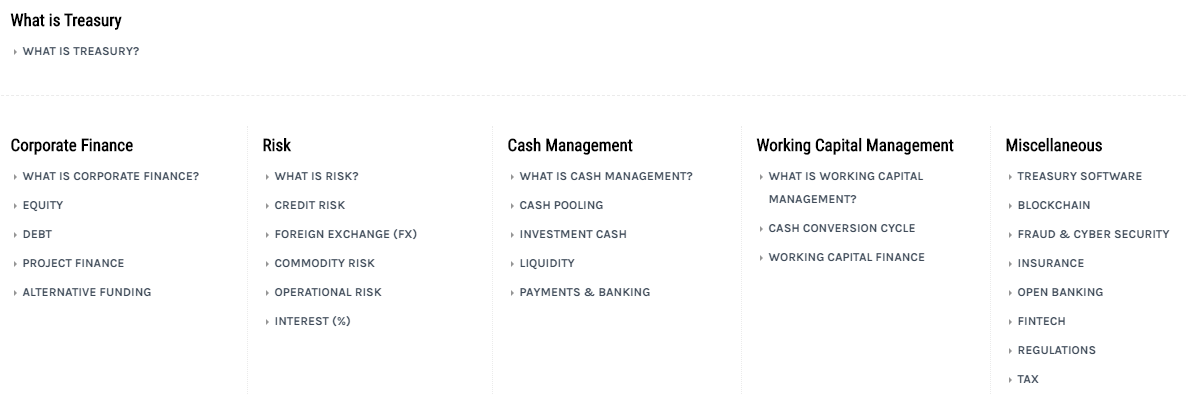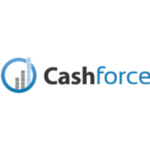| 25-10-2019 | Carlo de Meijer | treasuryXL
In my last blog about Gartner and Blockchain I mentioned the importance of the role of CIOs. They are supposed to play a leading role in determining if this technology could be of use for their business. Great question is: are CIOs already prepared for that role. In this blog I will sum up ten commandments for them that should be prerequisites for successful implementation of blockchain technology in their company.
1. CIOs should study blockchain, potential benefits, opportunities and use cases for their business
In order to get grip on blockchain and what it could mean for their business, CIOs should investigate what blockchain really is, that means the ins and outs, its characteristics, how it works, how to integrate blockchain into existing legacy systems etc. CIOs should put real thought into how this technology could potentially benefit the business, asking themselves why they need it, and what value it offers over legacy database or other technologies
While in the next few years blockchain will mostly affect how an organization executes its business, longer term blockchain will eventually change the core of a business. They therefore should start focusing beyond solely on how this technology is being used today. CIOs should look for opportunities to leverage blockchain technology for deeper business changes that can drive real value. They should focus on areas where blockchain could strengthen the organization’s value proposition. CIOs should figure out which use cases are most appropriate, , and propose projects that could truly differentiate the organization.
2. CIOs need to understand how blockchain will impact key parts of the business
The opportunities for blockchain technology are massive. It can significantly impact many parts of the business. The most important question for CIOs is how these changes might affect the enterprise and how can the organization exploit the technology?
CIOs need to start thinking about what value blockchain can add to their organization and how to tackle the challenges over the next five years. They should plan for incremental evolution of their own blockchain strategies. For that they should carefully look at the stages in which blockchain technology is situated. The Gartner Blockchain Spectrum distinct four phases: blockchain-enabling; blockchain-inspired; blockchain-complete and blockchain-enhanced. We are now half way i.e. in the blockchain-inspired phase. Technologies in this stage combine some elements of blockchain, but lack two core elements: decentralization and tokenization (see my blog: Gartner Blockchain Spectrum: a great tool for CIOs March 18, 2019).
3. CIOs should look at the potential gaps, weaknesses and hurdles of blockchain
Blockchain is not there yet. And – next to that – this technology is not a panacea for all companies problems. CIOs should be aware of that. One of the main elements of blockchain is decentralization. It removes central authorities from the process and enables a level of trust between two parties who have never done business before. The definition of participant will – as a result – expand beyond individuals and businesses to include things like smart contracts, distributed ledgers, connected things and DAOs.
Blockchain will facilitate the interactions between all of these participants and enable a new society, but cannot solve all trust problems. CIOs therefore should create a map that highlights potential gaps and weaknesses.
CIOs should also be aware of the various hurdles that prevent massive adoption. It will take a number of years before this technology will enter the maturity stage. Considerable work needs to be completed in ‘non-technology-related activities’ such as standards, regulatory frameworks and organization structures for blockchain capabilities to reach the Gartner Hype Cycle Plateau of Productivity. This is the third stage now also including the previous lacking instruments: decentralisation and tokenization. In a recent blog, Gartner listed eight hurdles needed for the technology to deliver its promises, including technically scalable blockchains, advances in smart contract technology, transaction risk assurance, data confidentiality, and an efficient consensus algorithm.
For effective rollouts, CIOs also need to keep in mind that blockchain is not secure in and of itself. Blockchain is a complex technology, and can lack the clarity of oversight and auditability that more traditional systems offer. As a result, compliance and enforcement costs may increase with blockchain implementation, and some regulatory environments (such as GDPR) may require oversight that is difficult to achieve with the technology. This is exacerbated by a lack of common standards or legal frameworks. CIOs should look at methods to manage these blockchain-related risks.
4. CIOs should brief their CEOs on the strategic implications of blockchain
Company boards will have to make strategic decisions on blockchain in a climate of uncertainty. Many boards of directors will therefore call upon CIOs to brief them on blockchain due to current market hype. CIOs should therefore regular update their CEOs on new developments. The difficult task as a CIO is to explain the strategic implications of blockchain without getting stuck in its technical aspects. Board directors do not want a lot of detail. They just want the high-level issues, implications and suggested actions. CIOs should thereby focus on three main areas: a description of blockchain, frictionless markets and the cross-industry business impacts of a programmable economy. The reason for this is that blockchain has the potential to create cross-industry, transparent and frictionless markets, where transactions have almost no costs and restraints. However, be aware that the future business climate, risks and legal status of blockchain remain unclear.
5. CIOs should warn their board not to underestimate the impact of blockchain
CIOs should warn their board not to underestimate the impact of blockchain. Blockchain for most industries remains ‘mired between inflated industry expectations and general disillusionment’ with regard to how it can improve business processes. While most have heard about blockchain, few understand the technology and its implications for business. This bears the danger that they are underestimating the impact of blockchain. Enterprises run the risk of having their business disrupted if they do nothing about blockchain; however, undertaking a blockchain initiative carries risks too. It is important for CIOs to discuss the areas where blockchain will affect the board’s risk calculations.
CIOs should also determine and inform their CEOs whether blockchain could solve business problems and whether they really need this technology. Existing systems may look much more efficient, or could be managed cheaper compared to blockchain solutions.
6. CIOs should think and work towards a new blockchain-based business model
Once decided to implement blockchain in their company, the greatest challenge for CIOs will be thinking about and working towards a new blockchain-based business model. As blockchain is a collaborative issue, main question for CIOs is, how they could come up with a business model in which companies in an industry can agree on common standards and operate together. This asks for a strategic approach. By focusing on a number of key areas early in their blockchain efforts, CIOs can lay the foundation toward successful execution. These areas include: make the blockchain business case, build an industry ecosystem, determine the rules of engagement, and, navigate regulatory uncertainty.
First of all CIOs should give strategic clarity when presenting their business case. This should ensure that their blockchain initiative has a business purpose around which they and other participants can align. For that it is needed to identify the business value. To get the most out of blockchain, collaboration between (previous) competitors is key. This should result in building an industry ecosystem, aimed to meet industry-wide challenges. For that it is important that CIOs discover the benefits of collaboration.
A third area of attention is to determine the rules of engagement. Every blockchain will require rules and standards, particularly around what various participants will be able to access and how they can engage. CIOs should thereby explore potential blockchain models and chose that one that fits best. Finally, CIOs need to “stay agile” to meet regulatory requirements as they evolve in the years to come. They should understand the shifting regulatory landscape.
7. CIOs should focus on the various challenges when implementing blockchain
Despite the potential opportunities of blockchain technology, organizations still face a number of important challenges when it comes to implementing blockchain. CIOs should focus on these challenges, that should be identified well in advance, in order to get the best out of this technology.
A first challenge – and not the least one – is the possible lack of skills. Because blockchain is still young and not yet a mainstream technology, there are very few professionals with skills in this area. This asks for intensive education, setting up internal and external courses, hiring externals etc.
Another challenge is the non-existence of a universal standard for blockchain. This limits the usability of blockchain in and between companies. Until you have standards, you really can’t share information in the classical sense. Though one uniform standard is still far away, Gartner predicts that there will be four main standards in about five years’ time. A third challenge is that blockchain must integrate with legacy technologies so that businesses can exchange information in a meaningful way. In some industries, this is a major obstacle. People just don’t understand the technology, or know what it is good for.
8. CIOs should continue to develop proofs of concept internally as well as part of market consortiums
In order to get grip on blockchain and what it can mean for their business, CIOs should continue to develop proofs of concept to test blockchain’s business worthiness. Thereby they should take into account that different industry domains (upstream, midstream, downstream and marketing) and functional areas (such as commodity trading, cash management, supply chains and data integrity) are expected to adopt blockchain on different timelines.
For enterprise success, blockchain needs to be a consortium effort – not something that is used only internally. CIOs should be aware that the transformative nature of blockchain works across multiple levels simultaneously (process, operating model, business strategy and industry structure), and its success will depend on coordinated action across multiple companies. The way to create a multi-company blockchain consortium however is a very difficult one.
9. CIOs should look to combine blockchain technology, Big Data Analytics, IoT and AI
Blockchain should not be looked at in an isolated way. In order to get the most out of blockchain technology, CIOs should investigate integrating this technology with other ones like Big Data Analytics, the Internet of Things (IoT) and Artificial Intelligence (AI).
Once blockchain has been combined with the Analytics, IoT and AI, blockchain has the potential to change business models forever, impacting both data and monetary flows and avoiding centralization of market power (see my blog: Blockchain and Big Data: a great marriage, January 29, 2019).
10. CIOs should be aware of the changing world in which business exist.
Finally, CIOs should be aware of the changing world in which business exist. Not only because of blockchain, but also triggered by other technologies. The reality is that blockchain and its core elements will radically alter not only the business world itself. The future might eventually lay in a more decentralised programmable economy, that may evolve into digital societies that have a legal standing equivalent to today’s corporates and individuals. These digital societies will set the terms of competition in the future. CIOs should realise that, not only by developing the technology, but also the ethics and practices to exist in the digital society.
What does this all mean for CIOs?
CIOs are counted on for innovation in their company. Related to blockchain, there however will be a need to a different approach, away from present blockchain tech-of-the-day approach to a more methodical one to innovation. This asks for a new type of CIO. To deliver, CIOs should realise and recognise that their ability to innovate is nowadays restricted by an organisation that lacks flexibility and agility. CIOs should instead become more flexible and agile and deliver an operating model that is fast, connected, and insights-driven.

Carlo de Meijer
Economist and researcher












